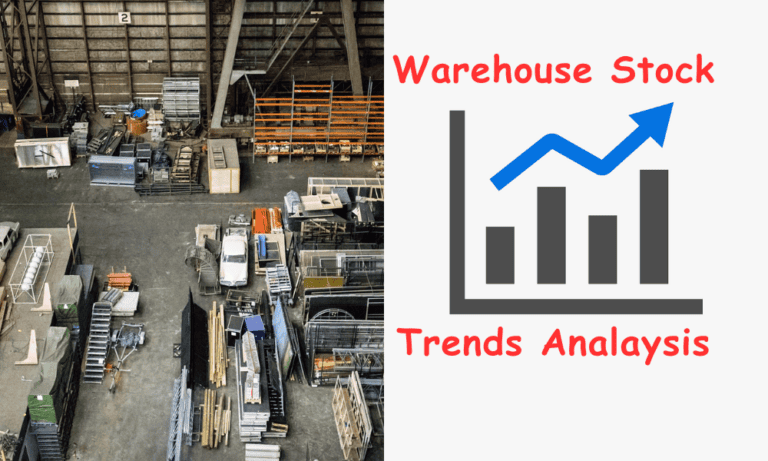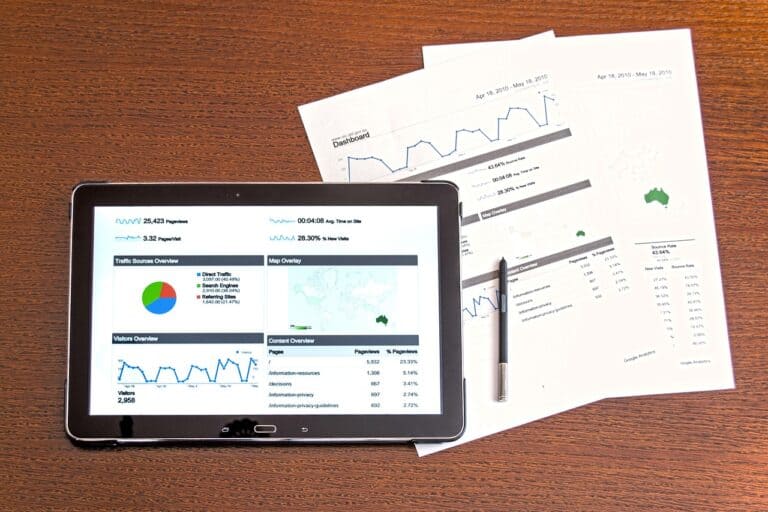A beginner’s introduction to Data Analytics
Data, Data Everywhere!!!
A study estimates that the world’s data volume doubles almost every 1-2 years.
Oil may run out one day but at the moment we can only see data going in the opposite direction…Boom and Boom.
Organisations and individuals now have unprecedented access to data, collected from every transaction, flight booking, advertisement interaction, and social media engagement.
The growth of industries around the globe has made data analytics an attractive option for career switchers.
Yet, those new to the field might wonder: What exactly does data analytics entail, and how does one get started?
This introductory guide to data analytics will cover these questions and beyond. For a hands-on start, there are various introductory short courses on data analytics available online.
This article will cover a range of topics and questions. Feel free to jump directly to a particular section by using the menu provided below:
Brief history
Data Analytics began receiving more attention in the late 1960s, as computers became decision-making support systems thus becoming an integral part of modern-day business decision-making.
Since then, data analytics has continuously evolved, widening its scope and delivering substantial benefits.
What is Data Analytics?
In its simplest form, data analytics, analytics or data analysis is the process of transforming raw data into meaningful insights that can be used to inform decisions and drive positive outcomes.
Data analytics can reveal trends and metrics that would otherwise be lost in the mass of information, enabling businesses and organisations to make smarter decisions.
Data analytics enables businesses to address key questions like What has occurred in the past? What is currently happening? What could potentially happen in the future?
Who are Data Analysts?
Data analysts are responsible for collecting, organising, and analysing data to identify trends and patterns that can help companies make informed decisions.
They work with large datasets, often using computational software and programming languages to clean and manipulate data and create visualisations to present their findings.
Data analysts need to be proficient in using statistical methods and tools to identify patterns and trends in the data.
Types of Data Analytics
Data analytics can be broadly categorised into four types, each offering different insights:
- Descriptive Analytics: This approach focuses on analysing past performance by examining historical data to uncover trends and patterns, typically serving as the foundation for further detailed analysis.
- Diagnostic Analytics: his method goes beyond the surface to uncover the underlying reasons behind events and behaviours. It can involve pinpointing and addressing outliers or anomalies in the data.
- Predictive Analytics: Using statistical models and forecasts, predictive analytics attempts to predict future trends and outcomes. For instance, a predictive model might leverage the relationship between seasonal trends and sales data to forecast the peak and trough periods of sales throughout the year. Armed with these insights, you could strategize marketing initiatives aimed at amplifying sales during slower periods and ramping up team efforts during high-demand seasons.
- Prescriptive Analytics: This advanced type of analytics recommends specific actions to achieve desired outcomes or avoid undesired ones. A common application of prescriptive data analysis is found in navigation and traffic apps. Consider Google Maps as an example: when you input your starting point and destination, the app suggests the optimal route for reaching your destination, whether by walking, public transport, cycling, or driving. It also factors in current traffic conditions and preferences for quieter, flatter, or more scenic routes. With this comprehensive data at your disposal, you can make informed travel choices that align with your preferences.
What the data analytics process typically involves
Although various types of data analysis require different methodologies, expertise, and knowledge to extract valuable insights, the fundamental process remains the same. Now let’s examine the steps a data analyst would typically take:
- Problem definition: The cornerstone of any data analysis is a clearly defined objective, also known as a “problem statement.” This statement answers the crucial question: what business problem are we trying to solve? By clearly outlining this objective, the data analyst sets the framework for the entire analysis, ensuring every step is directed towards finding the most relevant and insightful result.
- Data collection: At this stage, data is gathered from various sources, such as social media, customer surveys, website analytics, and internal databases.
- Data cleaning and preparation: Raw data is often messy and incomplete. This step involves cleaning and organising the data to ensure its accuracy and consistency.
- Data analysis: This is where the magic happens! Using statistical techniques and specialised software, data analysts uncover patterns, trends, and relationships within the data.
- Data visualisation: Insights from the analysis are then presented visually using charts, graphs, and dashboards, making them easier to understand and interpret.
- Communication and decision-making: Finally, the analyst communicates the findings to relevant stakeholders, who can then use these insights to make informed decisions based on evidence.
Techniques and types of analysis used in Data Analytics
Before we delve into key data analysis techniques, it’s crucial to understand the two primary types of data you’ll encounter namely: quantitative and qualitative.
Quantitative data: Think of it as the language of numbers. It’s any information that can be measured and expressed numerically, like the number of “yes” responses in a survey or the annual sales figures.
Qualitative data: In contrast, qualitative data speaks the language of words and experiences. It captures non-numerical information, like insights from interviews, the emotions expressed in customer reviews, or the sentiment of social media posts.
While data analysts primarily utilise quantitative data, understanding both quantitative and qualitative data types is valuable. Some roles require collecting and analysing qualitative information like customer feedback or interview transcripts. This broadens your skillset and equips you to tackle diverse data across contexts.
Here are some common data analytics techniques applicable to both types of data:
Regression analysis
Regression analysis sheds light on the relationships between variables. This method allows us to model and estimate how changes in one variable might affect another.
For example, we could use regression analysis to see if a movie star’s Instagram followers and the average gross of her last five films can be used to predict the box office success of her next film.
While prediction is a powerful application, regression analysis also offers valuable insights into the nature of these relationships, beyond just forecasting future outcomes.
It’s important to remember that while regression analysis can reveal relationships between variables, it cannot definitively establish cause and effect. The presence of a correlation doesn’t necessarily imply causation.
Factor analysis
Factor analysis, sometimes called dimension reduction, is a powerful technique for simplifying complex datasets. It helps data analysts uncover the hidden underlying factors driving people’s behaviour and choices.
Imagine having three variables representing customer satisfaction: a rating, a written review, and a sentiment score. Factor analysis would condense these into a single, comprehensive customer satisfaction score, making the data more manageable and insights easier to extract.
Cohort analysis
Imagine a group of users who share a common trait, like all customers who bought something on their mobiles in March. This group is called a cohort.
In cohort analysis, we don’t just look at all customer data as one big pool. Instead, we segment it into smaller groups like these cohorts. This allows us to see trends and patterns over time specific to each group, rather than getting an average picture.
By recognising these unique patterns, companies can personalise their services and offerings to better cater to the specific needs and preferences of different customer groups.
Cluster analysis
Cluster analysis is like organising a messy room. It helps uncover hidden patterns within a dataset by automatically grouping similar data points. Imagine having a pile of mixed objects: books, toys, and clothes.
Cluster analysis would sort these objects into distinct groups, ensuring books are mostly with other books, toys with toys, and so on. This technique is particularly useful when you don’t have predefined categories in your data.
In marketing, for example, cluster analysis can identify distinct customer groups based on their shared characteristics and buying habits, allowing for more targeted marketing strategies.
Time-series analysis
Put simply, time-series data consists of data points collected sequentially over time, all measuring the same variable.
Time-series analysis involves gathering data at regular intervals to discern patterns and cycles, thereby equipping data analysts with the ability to make reliable predictions.
For instance, to forecast future demand for a specific product, time-series analysis could be employed to examine how demand for that product has historically varied at different times.
Other data analytics techniques
These examples represent just a fraction of the numerous methods employed by data analysts, and we’ve merely touched on the basics of what each technique entails and its application. Depending on context, other frequently used techniques include:
- Monte Carlo simulations
- dispersion analysis
- discriminant analysis
- text or content analysis (a technique for analysing qualitative data)
Tools and technologies needed for Data Analytics
A wide array of tools and technologies exists to support various stages of the data analytics process outlined above.
Depending on the specific steps in the Data Analytics process, some of the most widely used tools include:
- Problem Definition:
- Mind Mapping Software: Tools like XMind, Lucidchart, or MindMeister help in brainstorming and defining the problem by visually organising information.
- Project Management Tools: Trello, Asana, and JIRA can help manage the scope and objectives of data analytics projects.
- Data Collection:
- Web Scraping Tools: BeautifulSoup, Scrapy (Python libraries), and Octoparse for extracting data from web pages.
- APIs: RESTful APIs from platforms like Twitter, Facebook, and Google Analytics for collecting data directly from these services.
- Databases: SQL databases (MySQL, PostgreSQL) and NoSQL databases (MongoDB, Cassandra) for storing and managing collected data.
- Surveys and Forms: Google Forms, SurveyMonkey, and Typeform for collecting data through surveys.
- Data Cleaning and Preparation:
- Data Wrangling Tools: Pandas (Python library), R (dplyr, tidyr), and data preparation platforms like Trifacta and Alteryx for cleaning and preparing data.
- ETL (Extract, Transform, Load) Tools: Talend, Informatica PowerCenter, and SSIS for integrating, cleansing, and moving data between systems.
- Data Analysis:
- Statistical and Computational Tools: R, Python (NumPy, SciPy), MATLAB for advanced statistical analysis and computational modeling.
- Big Data Processing Frameworks: Apache Hadoop, and Apache Spark for processing large datasets.
- Machine Learning Libraries: scikit-learn, TensorFlow, and PyTorch for applying machine learning algorithms to data sets.
- Data Visualisation:
- Basic Visualisation Tools: Microsoft Excel, and Google Sheets for basic charts and graphs.
- Advanced Visualisation Software: Tableau, Power BI, Qlik Sense for creating interactive dashboards and complex visualisations.
- Programming Libraries: Matplotlib, Seaborn, ggplot2 (R), and D3.js (JavaScript) for custom visualisations.
How to start your journey in Data Analytics
Pursuing a career in data analytics involves a combination of technical abilities, an analytical mindset, and ongoing education. There isn’t a one-size-fits-all path to becoming a data analyst, but there are several essential hard and soft skills newcomers to the field must have.
Hard skills refer to the technical competencies needed to meet the demands of a job. These skills can typically be quantified by levels of proficiency, which vary from basic understanding to advanced expertise.
Essential hard skills for a data analyst include:
- Proven expertise in programming and querying languages like Python and SQL
- Proven capability in using business intelligence and data analytics tools, such as RapidMiner, Tableau, and SAS
- Comprehensive knowledge of the data analysis process
- Strong numerical and statistical abilities
On the other hand, think of soft skills as traits inherent to your personality, although you might have developed or enhanced these abilities through different roles or experiences you’ve encountered.
Some of the necessary soft skills required to become a data analyst are:
- Excellent teamwork and communication capabilities
- Keen attention to detail
- Systematic and logical thinking
- Strong problem-solving orientation.
As you can see soft skills, compared to hard skills, are not measurable.
Steps to becoming a Data Analyst
Enrol in a data analytics short course or degree program
If you are an aspiring data analyst with limited experience, you can find data analytics boot camps to be a valuable springboard into the field. These immersive programs equip you with the essential skills and knowledge needed to launch your data analyst career.
When choosing a data analytics boot camp or course, prioritise features that will equip you to succeed.
Here’s what to look for in short courses:
1. Project-based curriculum: The course should be designed to help you gain hands-on experience through projects that showcase your skills in a portfolio for potential employers.
2. One-on-one mentoring: Ensure it’s a course that offers personalised guidance and feedback from experienced data analysts to accelerate your learning.
3. Certificate of completion: Enrol in a program that guarantees that you can earn a recognised credential that demonstrates your commitment and mastery of essential data analytics skills.
While not essential, the following additional features can further enhance your career prospects:
- Job preparation: The program should have resources and guidance specifically designed to help you land your dream job.
- Networking opportunities: It should provide networking opportunities that will help connect you with industry professionals and fellow learners to expand your network and explore career paths.
- Job guarantee: Some programs offer job guarantees, providing additional confidence and security as you enter the workforce.
Create a solid data analytics project portfolio
A strong resume is a great start, but to impress recruiters and employers, you need to showcase your skills and experience tangibly. This is where a data analytics portfolio comes in.
It’s a compelling addition to your resume, providing real-world examples of your work. Think of it as your chance to go beyond bullet points and demonstrate your ability to solve problems with data.
Showcase your skills effectively by creating an online data analytics portfolio that’s regularly updated. Your portfolio should demonstrate a diverse range of projects that highlight the breadth of your abilities.
Include:
- Independent and team-based projects: Prove your ability to both work independently and collaborate effectively.
- Variety in programming languages: Demonstrate proficiency in multiple relevant tools.
- Diverse analytical methods: Showcase your flexibility and adaptability in solving different problems.
- Visualisation and clear explanations: Highlight your ability to communicate insights effectively.
You can learn more about data analytics portfolios (with examples!) here.
Launch your job search: Do your research, network, and apply
The field of data analytics is wide-ranging, and the roles you’ll find online won’t all come under the same name. Explore your interests and aspirations through independent research to find fields and companies that resonate with you.
After identifying potential companies and organisations of interest, networking becomes crucial. You can achieve this through participating in career fairs, connecting with recruiters, or contacting individuals on LinkedIn. Networking is an effective method to gather information about forthcoming positions that may not be advertised on the company’s careers page.
Now’s the time to start applying for jobs as a data analyst! It’s important to tailor your cover letter for each job application you’re interested in.
Yes, this means a bit more work, but it’s worth the effort—generic cover letters are easily recognised by recruiters. Customising your application signals your real enthusiasm for the role. It may take some time for your applications to bear fruit, but perseverance pays off in the end. Remember, every interview offers a chance to improve for the next one.
Participate in data analytics competitions and hackathons
Another way you might want to gain confidence and experience on projects as a beginner in data analytics is to participate in Data analytics Competitions and Hackathons
These are events where individuals or teams tackle analytical problems or projects within a specified timeframe. These events often focus on solving real-world problems using data analysis, machine learning, and statistical modeling techniques.
Participants are given datasets and are tasked with deriving insights, building predictive models, or developing innovative solutions to the given challenges. These competitions serve as excellent platforms for aspiring and experienced data analysts alike to enhance their skills, showcase their talents, and network with peers and industry professionals.
Winners may receive prizes, recognition, and sometimes job offers from sponsoring companies. Participating in these events is a valuable way to gain practical experience, learn new tools and techniques, and stay updated with the latest trends in data analytics.
Here’s a simple summary of how you can start to become a Data Analyst
Even if you’re new to data analytics, there are resources available to help you get started. Here are some steps you can take:
- Learn the basics: Start by understanding key concepts like data types, basic statistical methods, and data visualisation techniques.
- Explore online resources: There are numerous online courses, tutorials, and articles that can provide a solid foundation in data analytics.
- Practice with real data: Many websites offer datasets on various topics, allowing you to experiment with data analysis tools and techniques.
- Consider professional training: If you want to pursue a career in data analytics, consider taking dedicated courses or boot camps to gain in-depth knowledge and practical skills.
- Stay curious and up-to-date: The field of data analytics is constantly evolving, so stay curious, keep learning, and explore new technologies as they emerge.
Some crucial challenges in Data Analytics
Challenges in data analytics encompass several critical issues that analysts must navigate to extract valuable insights from data effectively. These include:
- Data Quality and Quantity: Ensuring high-quality, accurate data is foundational for reliable analytics. However, data often comes with inconsistencies, missing values, or errors. Analysts must clean and preprocess data, which can be time-consuming. In addition, the quantity of data can be a double-edged sword; while more data can lead to better insights, it also demands more sophisticated processing and analysis techniques.
- Privacy and Security Concerns: With the increasing amount of personal data being collected, privacy and security are paramount. Data analysts must navigate complex legal and ethical landscapes to protect sensitive information. Compliance with regulations like the General Data Protection Regulation (GDPR) and Health Insurance Portability and Accountability Act (HIPAA) is critical, and there’s a constant balance between leveraging data for insights and respecting individual privacy.
- Staying Updated with Latest Trends: The field of data analytics is rapidly evolving, with new tools, techniques, and best practices emerging regularly. Professionals must commit to continuous learning to stay relevant. This includes keeping up with advancements in machine learning algorithms, data visualization tools, and analytics methodologies to ensure they are applying the most effective strategies to their data analysis tasks.
- GDPR: General Data Protection Regulation. It is a regulation in EU law on data protection and privacy in the European Union and the European Economic Area. It also addresses the transfer of personal data outside the EU and EEA areas.
- HIPAA: Health Insurance Portability and Accountability Act. It is a United States legislation that provides data privacy and security provisions for safeguarding medical information.
Navigating these challenges is essential for data analysts to provide accurate, actionable insights while maintaining ethical standards and ensuring data integrity.
The future of Data Analytics
The future of data analytics is poised for significant evolution, shaped by emerging trends and the increasing integration of artificial intelligence (AI) and machine learning (ML).
- Emerging Trends: The landscape of data analytics is continuously evolving, with new technologies and methodologies emerging.
Trends such as real-time analytics, edge computing, and the Internet of Things (IoT) are changing how data is collected, analysed, and utilised, enabling more dynamic and immediate insights.
In addition, the growth of cloud computing and as-a-service platforms are making powerful analytics tools more accessible to a wider range of users and industries. The emphasis on data visualisation tools and dashboards is also growing, as they allow users to more easily understand complex datasets and analytics outcomes.
- The Role of AI and Machine Learning: AI and ML are at the forefront of transforming data analytics. These technologies enable the automation of data analysis processes, allowing for the handling of vast amounts of data more efficiently than ever before.
AI and ML can uncover patterns and insights that may not be apparent to human analysts, leading to more accurate predictions and smarter decision-making. Furthermore, AI-driven analytics are enhancing personalisation, predictive maintenance, and anomaly detection across various sectors. As AI and ML continue to advance, their integration into data analytics will only deepen, making analytics more powerful, predictive, and integral to strategic decision-making in businesses and organisations worldwide.
Together, these factors are driving a more sophisticated, immediate, and predictive analytics environment, promising to unlock new levels of insight and efficiency for businesses and society at large.
Wrapping up
The world of data analytics is vast and dynamic, offering exciting opportunities for those who are curious, analytical, and eager to learn. This guide has provided a taste of what data analytics entails, the skills it requires, and the steps you can take to embark on this rewarding career path.
Remember, the journey to becoming a data analyst is a continuous learning process. Embrace challenges, stay curious, and continuously adapt your skills to stay ahead of the curve. The future of data analytics is bright, and with dedication and perseverance, you can be a part of its exciting evolution.






